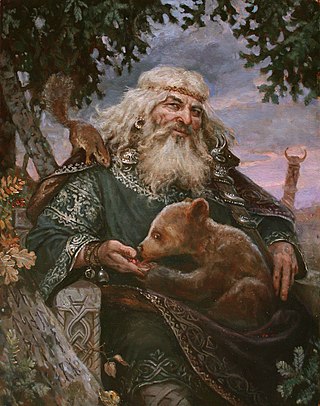
Veles, also known as Volos, is a major god of earth, waters, livestock, and the underworld in Slavic paganism. His mythology and powers are similar, though not identical, to those of Odin, Loki and Hermes.

Mokosh is a Slavic goddess mentioned in the Primary Chronicle, protector of women's work and women's destiny. She watches over spinning and weaving, shearing of sheep, and protects women in childbirth. Mokosh is the Mother Goddess.
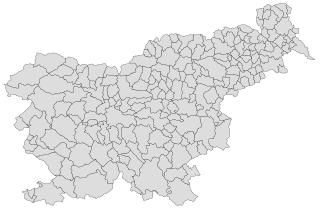
Slovenia is divided into 212 municipalities, of which 12 have urban (metropolitan) status. Municipalities are further divided into local communities and districts.

The Slovenian Academy of Sciences and Arts is the national academy of Slovenia, which encompasses science and the arts and brings together the top Slovene researchers and artists as members of the academy.
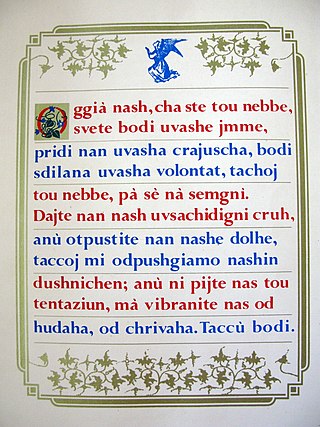
The Resian dialect or simply Resian is a distinct variety in the South Slavic continuum, generally considered a Slovene dialect spoken in the Resia Valley, Province of Udine, Italy, close to the border with Slovenia.
Resia is a comune (municipality) in the Regional decentralization entity of Udine, in the Friuli-Venezia Giulia region of northeast Italy, bordering on the municipalities of Chiusaforte, Lusevera, Resiutta, and Venzone, and also on two of the Slovenian municipalities. Its residents speak an archaic dialect known as Resian, which is – according to most linguists – a transitional dialect between the Carinthian and Littoral dialects of Slovene. Although they maintain their own traditional system of family names, which are of Slavic origin, the people of Resia have either Italian or Italianized surnames, similarly to some areas in Venetian Slovenia.

Hvare-khshaeta is the Avestan language name of the Zoroastrian yazata (divinity) of the "Radiant Sun."

Peter Štih is a Slovenian historian, specialising in medieval history.
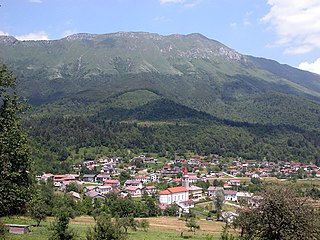
Breginj is a village in the Municipality of Kobarid in the Littoral region of Slovenia. It is located in the Breginj Combe.

Marko Snoj is an Indo-Europeanist, Slavist, Albanologist, lexicographer, and etymologist employed at the Fran Ramovš Institute for Slovene Language of the Scientific Research Center of the Slovenian Academy of Sciences and Arts in Ljubljana, Slovenia. He served as director of the institute from 2008 to 2018. He has made numerous scholarly contributions to Indo-European linguistics, particularly in the realms of Slovene and Albanian, and is noted for his work in advancing Slavic etymology in both scholarly and popular domains. He is a full fellow of the Slovenian Academy of Sciences and Arts.

Oto Luthar is a Slovenian historian. Since 1992, he has served as the director of the Research Centre of the Slovenian Academy of Sciences and Arts in Ljubljana, the second largest research institution in Slovenia.
Dom in svet was a Catholic cultural and literary journal published in Slovenia.

The Carinthian dialect group is a group of closely related dialects of Slovene, a South Slavic language. The Carinthian dialects are spoken by Carinthian Slovenes in Austria, in Slovenian Carinthia, and in the northwestern parts of Slovenian Styria along the upper Drava Valley, in the westernmost areas of Upper Carniola on the border with Italy, and in some villages in the Province of Udine in Italy.

In Slavic mythology, Perun is the highest god of the pantheon and the god of sky, thunder, lightning, storms, rain, law, war, fertility and oak trees. His other attributes were fire, mountains, wind, iris, eagle, firmament, horses and carts, and weapons. The supreme god in the Kievan Rus' during the 9th-10th centuries. He was first associated with weapons made of stone and later with those of metal.
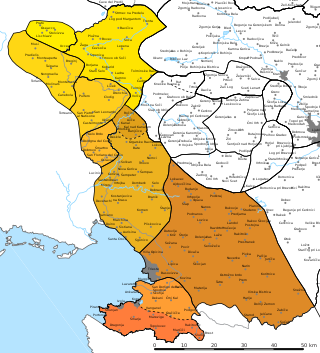
This article uses Logar transcription.

Marina Gržinić is a philosopher, theoretician, and artist from Ljubljana. She is a prominent contemporary theoretical and critical figure in Slovenia. Since 1993, she is employed at the Institute of Philosophy at the Scientific and Research C |title= enter of the Slovenian Academy of Science and Arts. Today, she serves as a professor and research adviser. For her scientific work, she received the Golden SASA sign in 2007. Since 2003, she has also served as a Full Professor at the Academy of Fine Arts in Vienna, Austria. She publishes extensively, lectures worldwide, and is involved in video art since 1982.
Acta Geographica Slovenica is a peer-reviewed scientific journal of geography published by the Anton Melik Geographical Institute covering human geography, physical geography, and regional geography. The editor-in-chief is Blaž Komac.
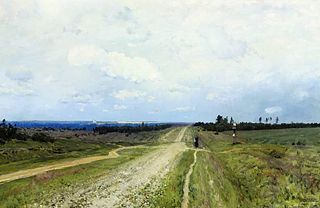
Nav is a phrase used to denote the souls of the dead in Slavic mythology. The singular form is also used as a name for an underworld, over which Veles exercises custody—it is often interpreted as another name for the underground variant of the Vyraj.
















